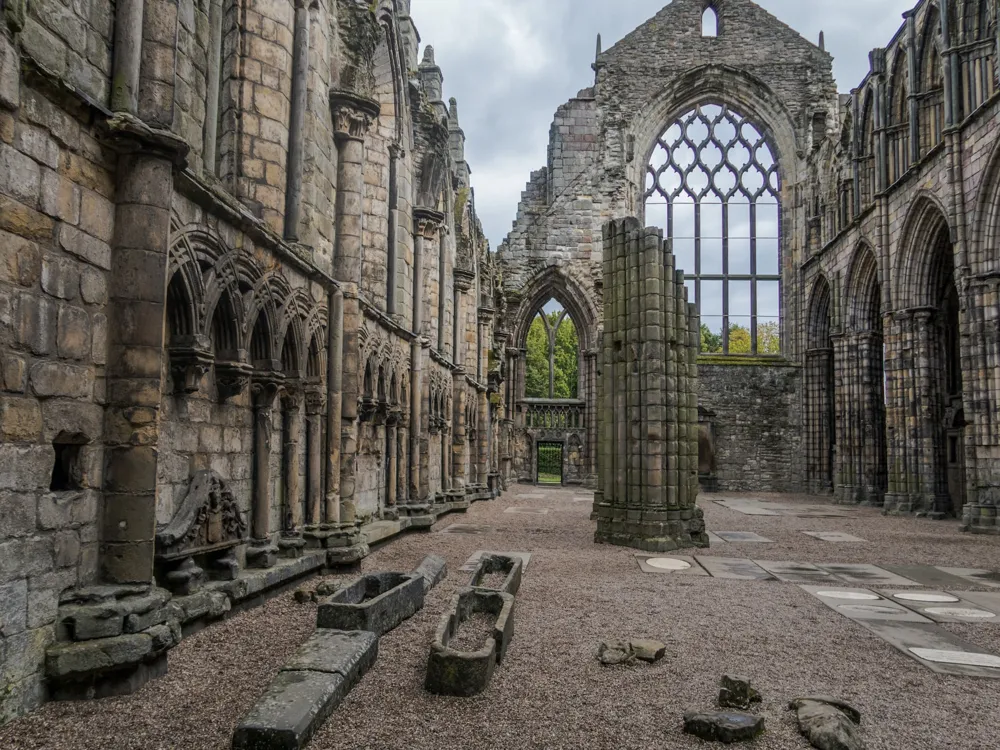Holyrood Park, a royal park in the heart of Edinburgh, Scotland, is a place of natural and historical significance. This 650-acre park, adjacent to the Royal Palace of Holyroodhouse, offers a unique blend of history, culture, and nature. The park's landscape is dominated by Arthur's Seat, an ancient volcano, and the Salisbury Crags, a series of dramatic cliff faces. The park's rich history dates back thousands of years, with evidence of prehistoric settlements, and it has played a pivotal role in Scotland's story. The park is a haven for wildlife and a popular spot for hillwalking, offering panoramic views of the city. Holyrood Park's history is intertwined with the monarchy and the evolving landscape of Edinburgh. Once a royal hunting estate, the park has been a part of significant historical events, including rebellions and royal ceremonies. Its natural features have inspired poets, writers, and artists for centuries. The park's maintenance and preservation are managed by Historic Environment Scotland, ensuring that its natural and historical assets are protected for future generations. The geological formation of Holyrood Park is a fascinating aspect of its character. Arthur's Seat, rising 251 meters above sea level, is the most prominent feature and is of particular interest to geologists. The park's diverse geological structures provide insights into volcanic activity that shaped the region millions of years ago. These features make the park a valuable educational resource for those interested in earth sciences. Holyrood Park is home to a diverse range of plants and animals. Its varied landscapes, from crags to lochs, support a wide variety of habitats. The park's biodiversity includes several bird species, mammals, and a rich variety of plant life. This biodiversity contributes to the park's appeal as a place for nature lovers and conservationists. The architecture within Holyrood Park is a blend of natural and man-made structures. While the park's primary allure is its natural landscape, several architectural features contribute to its charm. St. Anthony's Chapel, a medieval ruin, is a notable structure within the park. The ruins offer a glimpse into the park's religious history and are a popular subject for photographers. Additionally, the Duddingston Loch and its bird sanctuary feature architectural elements that enhance the park's appeal and functionality. Besides St. Anthony's Chapel, Holyrood Park houses other man-made landmarks. These include the Queen's Drive, a road circling the park, providing access to many of its key features. The Radical Road, a pathway constructed by the unemployed weavers in 1820, is another significant man-made structure, offering a unique perspective of the park's terrain. The Victorian era left a significant mark on the park's architecture. This period saw the construction of several pathways, improvements in landscaping, and the addition of decorative elements. These enhancements reflect the Victorian love for romantic landscapes and contributed to making the park more accessible to the public. Conservation efforts in Holyrood Park focus on preserving both its natural and architectural heritage. These efforts ensure that the park's historical structures are maintained, while also protecting its natural landscape from urban encroachment. This delicate balance is key to preserving the park's historical integrity and natural beauty. The best times to visit Holyrood Park are during the spring and summer months when the weather is mild, and the park's flora is in full bloom. However, each season offers a unique experience, with autumn providing stunning foliage and winter offering crisp, clear views. Visitors should come prepared with comfortable walking shoes, weather-appropriate clothing, a camera, and a map of the park. It's also advisable to bring water and snacks, especially if planning to hike up Arthur's Seat. Popular activities in Holyrood Park include hiking, bird watching, and photography. The park also provides opportunities for educational walks, focusing on its historical and geological aspects. Holyrood Park is easily accessible by public transport, car, or on foot. The park is within walking distance of Edinburgh's city center. For those using public transport, several bus routes stop near the park. Visitors traveling by car will find parking available near the park's main entrances. Additionally, cycling is a popular option for reaching and exploring the park. Read More: Overview of Holyrood Park, Edinburgh
History
Geological Significance
Flora and Fauna
Architecture of Holyrood Park, Edinburgh
Man-Made Landmarks
Influence of the Victorian Era
Conservation Efforts
Tips When Visiting Holyrood Park, Edinburgh
Best Times to Visit
What to Bring
Activities
How To Reach Holyrood Park, Edinburgh
Holyrood Park, Edinburgh
Edinburgh
₹ 54,993 onwards
View edinburgh Packages
Edinburgh Travel Packages
View All Packages For Edinburgh
Top Hotel Collections for Edinburgh

Private Pool

Luxury Hotels

5-Star Hotels

Pet Friendly
Top Hotels Near Edinburgh
Other Top Ranking Places In Edinburgh
View All Places To Visit In edinburgh
View edinburgh Packages
Edinburgh Travel Packages
View All Packages For Edinburgh
Top Hotel Collections for Edinburgh

Private Pool

Luxury Hotels

5-Star Hotels

Pet Friendly















